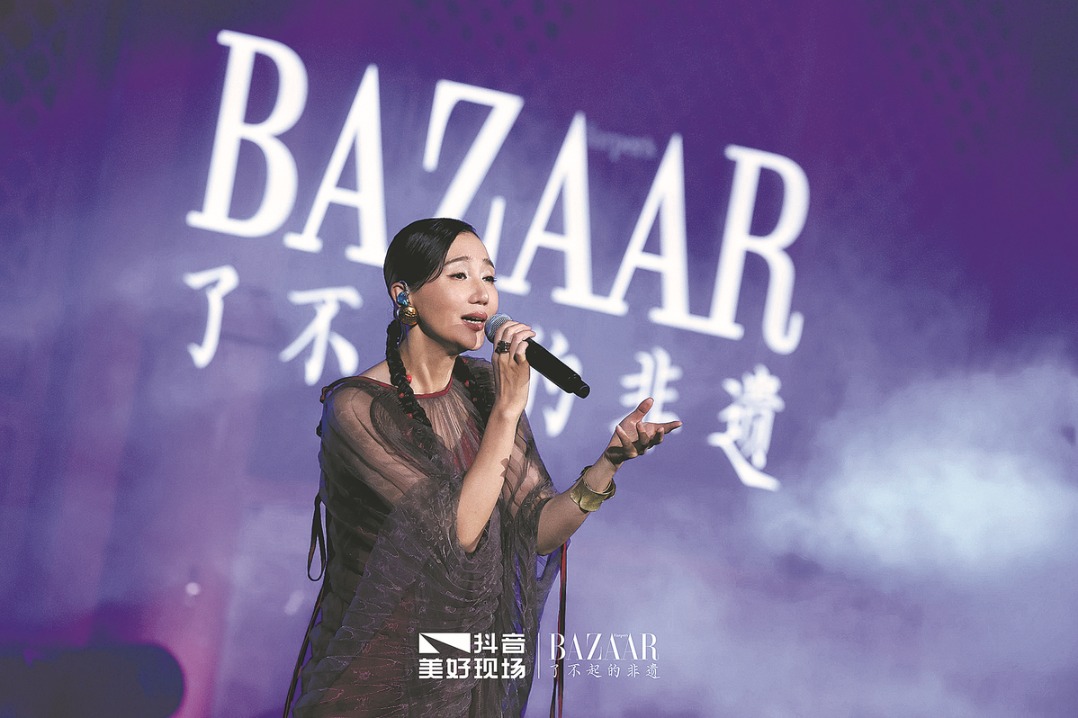Museum showcases rare lacquerware for the first time in new exhibition


A new exhibition called In a Myriad of Forms that is ongoing at the Shanghai Museum till Feb 24 is providing visitors the rare chance to view lacquer art that originated thousands of years ago.
According to Bao Yanli, a researcher with the Shanghai Museum, lacquerware that was previously found in the Hemudu Culture ruins in Zhejiang province date back to as far as 7,000 years ago. These extremely rare relics were not able to be displayed during the exhibition.
Among the 280 objects on exhibition are trays and cups that are elaborately decorated with mother-of-pearls and paintings, lacquer boards with carved figures, patterns and story scenes, as well as guqin, a plucked music instrument that was widely favored by Chinese literati in the past.
Two-hundred and seventy of the exhibits belong to the Shanghai Museum's collection, while the others were borrowed from museums in other provinces such as Zhejiang, Jiangsu, Fujian and Shanxi.
According to Li Zhongmou, deputy director of the Shanghai Museum, the majority of the artifacts are being shown for the first time as there are strict requirements regarding the exhibition of lacquer relics. He added that the Shanghai Museum has amassed a collection of nearly 1,000 lacquer objects since its establishment in 1952.
The last time the Shanghai Museum put on a showcase of such rare artworks was almost 40 years ago in 1979 when it collaborated with Hubei Museum to present an exhibition of lacquer works from the Warring States Period (475-221 BC) that were unearthed in Hubei province.
"Lacquer is one of the most important contributions China made to human civilization," said Bao, referring to how the Chinese were the first in the world to use the resin from lacquer trees to create decorative designs.
She added that it was a lacquer cup with jade inscription that was unearthed from the Liangzhu Culture site in Zhejiang province that marked the beginning of humans combining utility and artistry in lacquerware.
About 2,000 years ago, many centers for lacquer production were established, and the Chinese character for lacquer, "qi", began to show up in the names of people, creeks and villages. For example, Confucius even had a disciple named Lacquer Carver, Bao added.
Lacquer art then reached its peak between the Warring States Period and the Han Dynasty (206 BC-AD 220) when the material was widely used to create objects for rituals, burials and everyday objects.
"Thousands of lacquerware pieces were unearthed from the tombs of this period, most of which had colorful paintings on the surface," said Bao.
The most spectacular pieces at the exhibition are from the era when lacquerware in China reached its second peak — the period spanning the Song (960-1279) and Qing (1644-1911) dynasties, she added.
In the Song Dynasty, artisans developed complex lacquer-making techniques which involved the application of hundreds of layers of lacquer to create an artwork.
"The lacquer could not be applied again if the previous coating did not dry properly, which means the process could take hundreds of days," Bao said.
Following the application of the coating, craftsmen would add complicated decorations using gold, carvings and inscriptions. The production of lacquerware was later deemed such a labor-intensive task that the emperors of the Song Dynasty banned it temporarily as they deemed it a waste of manpower.
During the Tang Dynasty (618-907), lacquer art was introduced to Japan where craftsmen developed a unique style for it. In fact, Europeans used to call lacquer-making as "Japaning" because of how skilled Japanese craftsmen were. The craft later made its way to the West from Japan.
The sixth and final chapter of the exhibition features modern objects from China's Fujian province, including lacquer sculptures with fine details which illustrate the contemporary achievements of lacquer art in China, said Bao.





































